Post Turned Spalted Bowls
Mel Linquist began selling turned spalted wood in the 1960's, and his son joined forces in this endeavor in the 1970's. With David Ellsworth beginning to turn naturally spalted wood in the late 1970's, they introduced turners, art collectors, and the general public to the material that became known as spalted wood.
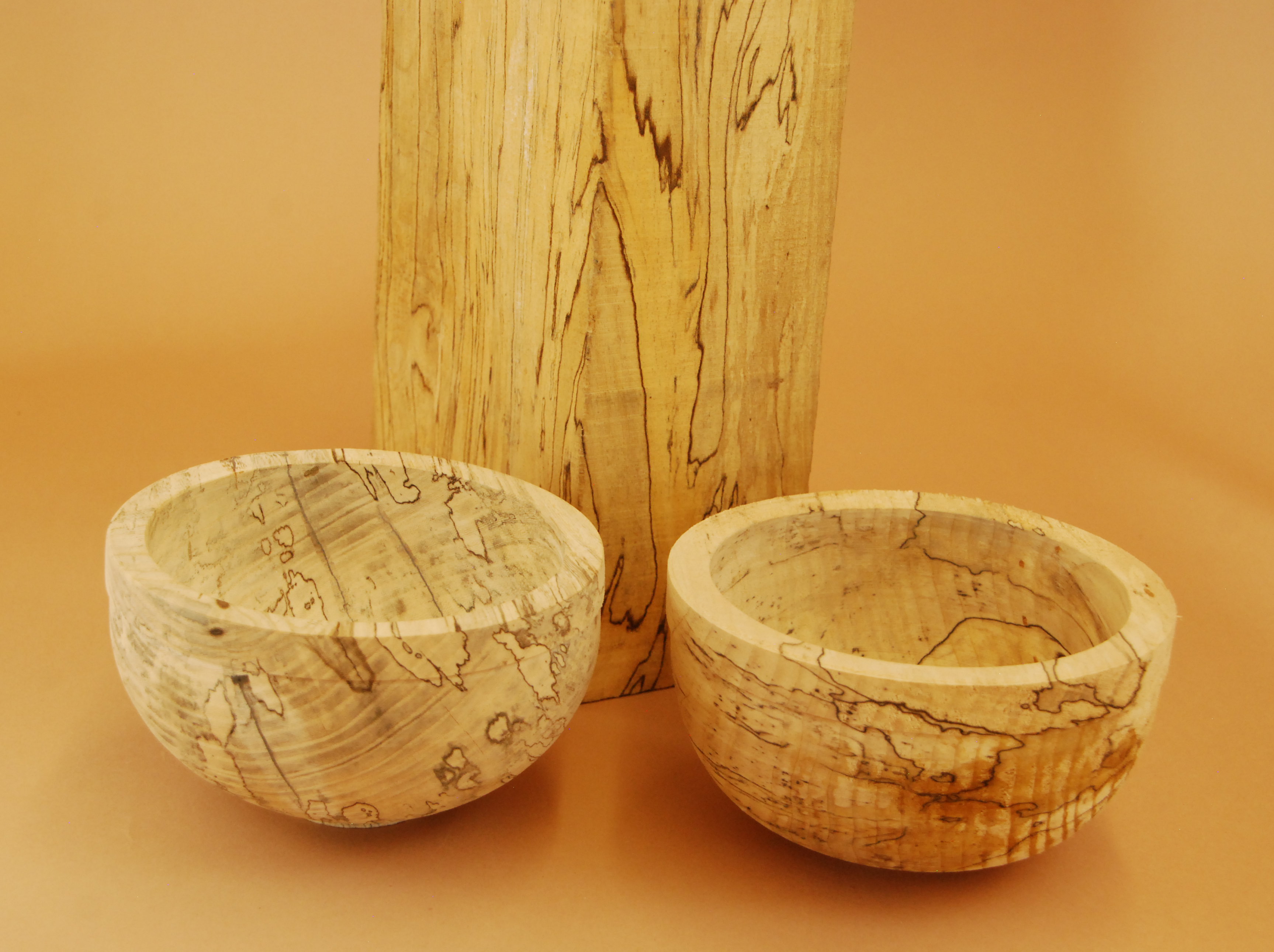
This photo shows two bowls and a small block of wood with random black lines and some light and dark areas. The lines are known as "zone lines" and the pigment can be produced by a number of different fungi. Wood with these zone lines is still all that most people know as spalted wood.
The fungal pigment usually is deposited in the wood when there are two or more fungi competing with each other. Brown and black may be the most common fungal pigments in North America.
One way to obtain spalted wood is to explore downed logs in woods and forests. This was the only source of spalted wood for Mel and Mark Linquist and David Elsworth.
In the 1980's, a college student was very interested in the fungi that produce spalted wood, eventually earning her doctorate in the study of fungi. Today, Dr. Seri Robinson runs the mycology lab at Oregon State University, teaches spalting and woodturning, continues to conduct research and publish on spalting fungi, and with two others has written a seminal book on spalted wood, Spalted Wood, published in 2016.
Dr. Robinson, aka "Dr. Spalt," has freely shared her discoveries on innoculating with usually two fungi to produce spalted wood under controlled conditions.
The following bowls were turned from green wood, dried, sanded, rehydrated, and then innoculated with two different fungi to produce spalting. The fungal pigment patterns on the surfaces of the bowls are very different from naturally spalted wood. But like naturally spalted wood, the pigment patterns document ongoing battles between fungi.
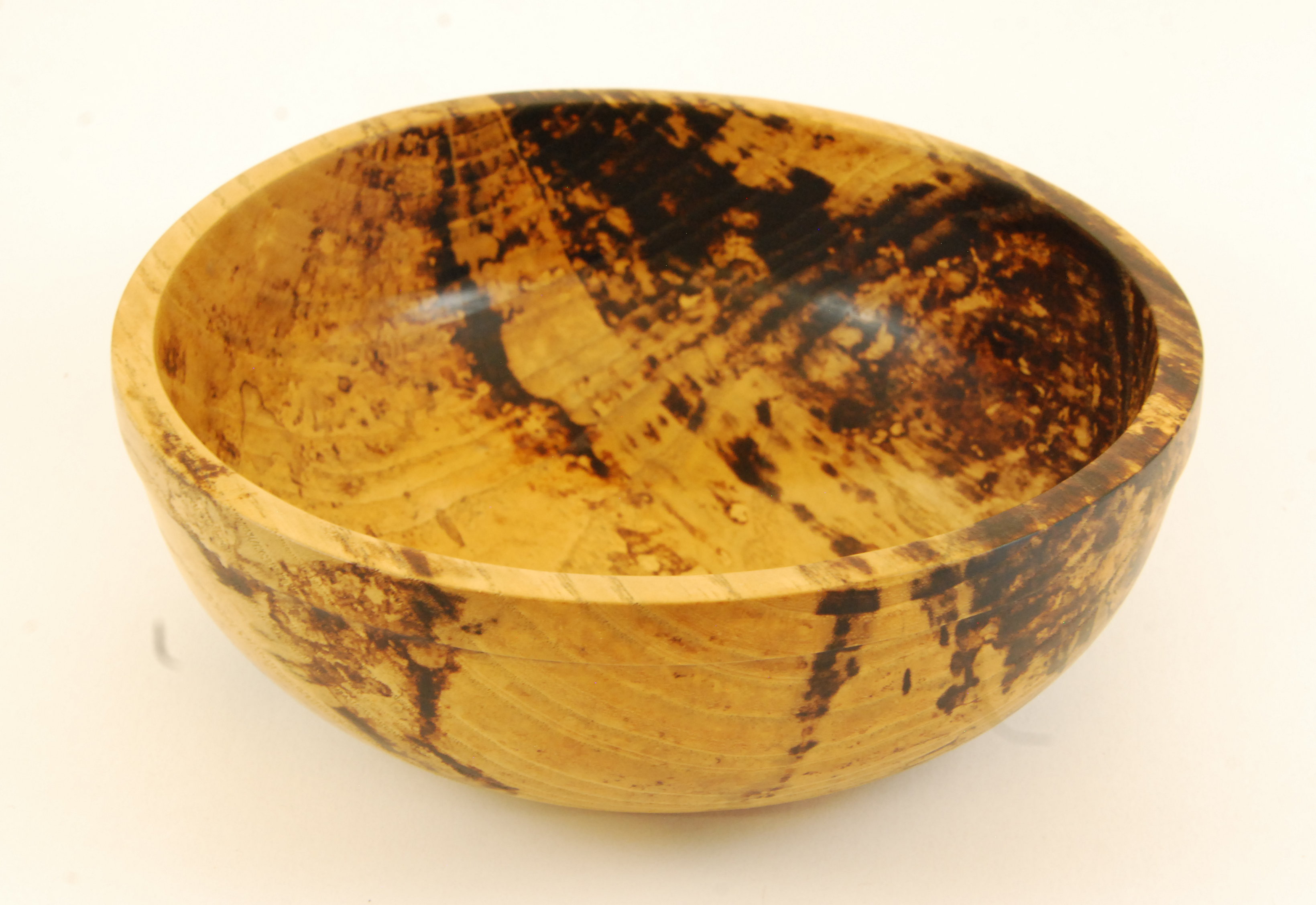
This ash bowl shows a heavy layer of the zone line material on the inside surface of the bowl, suggesting the wood was becoming too dry for survival, and the fungus was trying to hold in the remaining moisture.
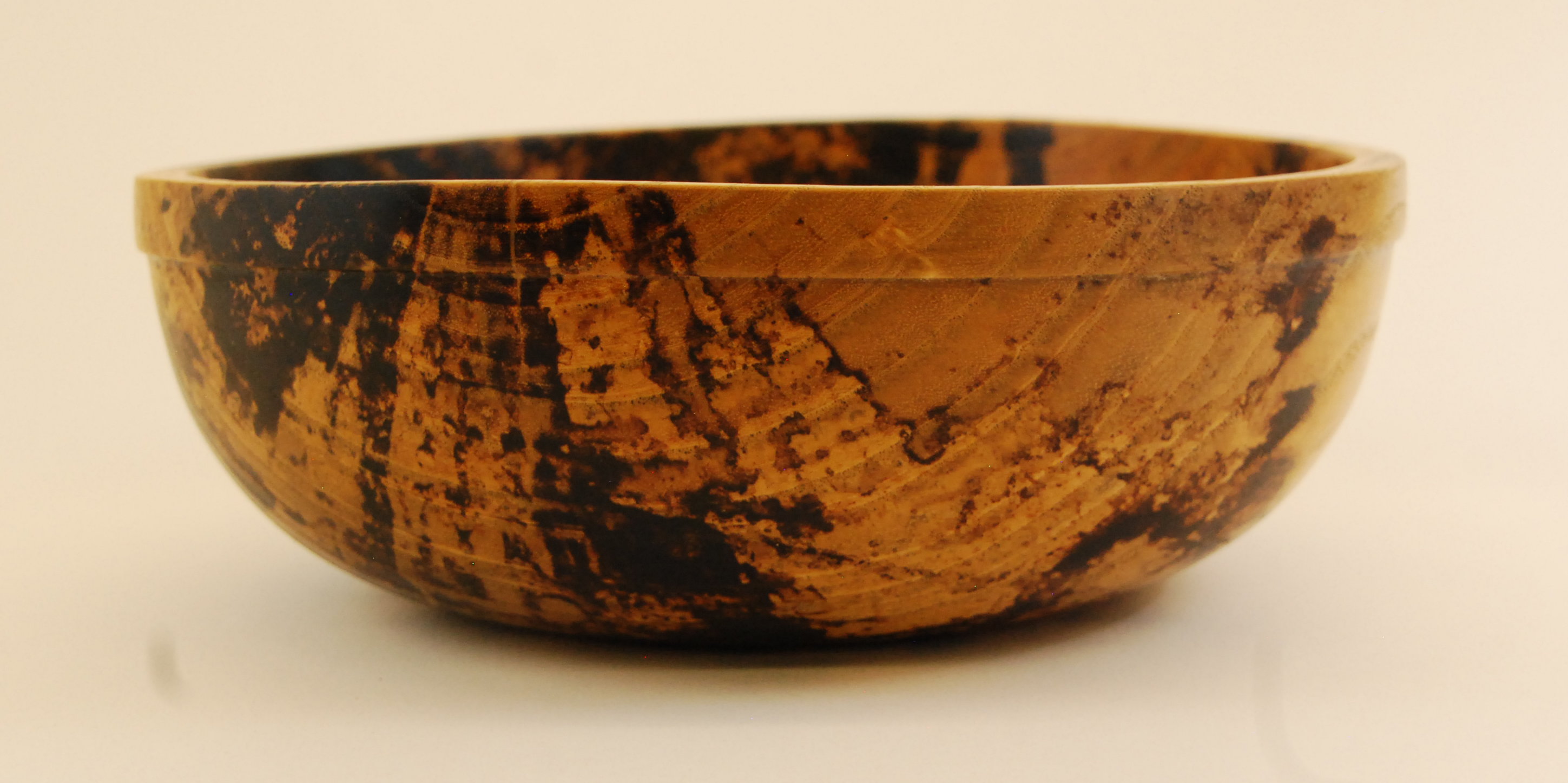
Around the mat-like area on the outside surface, the wood is lighter in color due to some initial decay of the wood itself after the available sugar was consumed. This phenomenon is known as "bleaching" or "white rot" and is also produced by many fungi.
At the outside top of the rim, a subtle band adds a shadow line for further visual interest.
The diameter of this bowl runs between 6 5/8" and 7"; the height between 2 1/4" and 2 3/8".
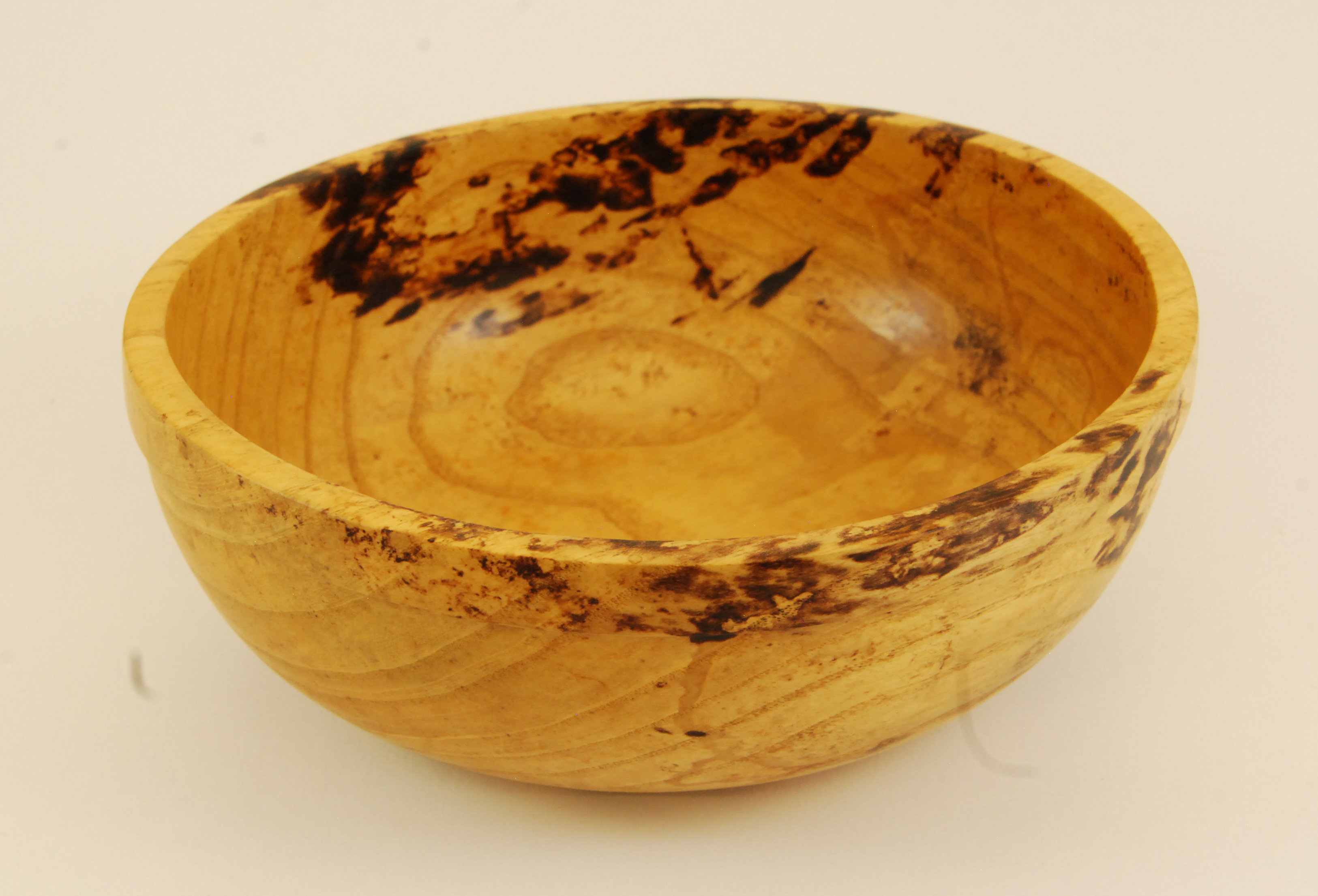
This ash bowl shows less fungal pigment, suggesting the wood dried out too quickly. While not as noticeable as the black, there is some light brown color on the inside of the bowl, which was created by the second fungus that was introduced to the wood.
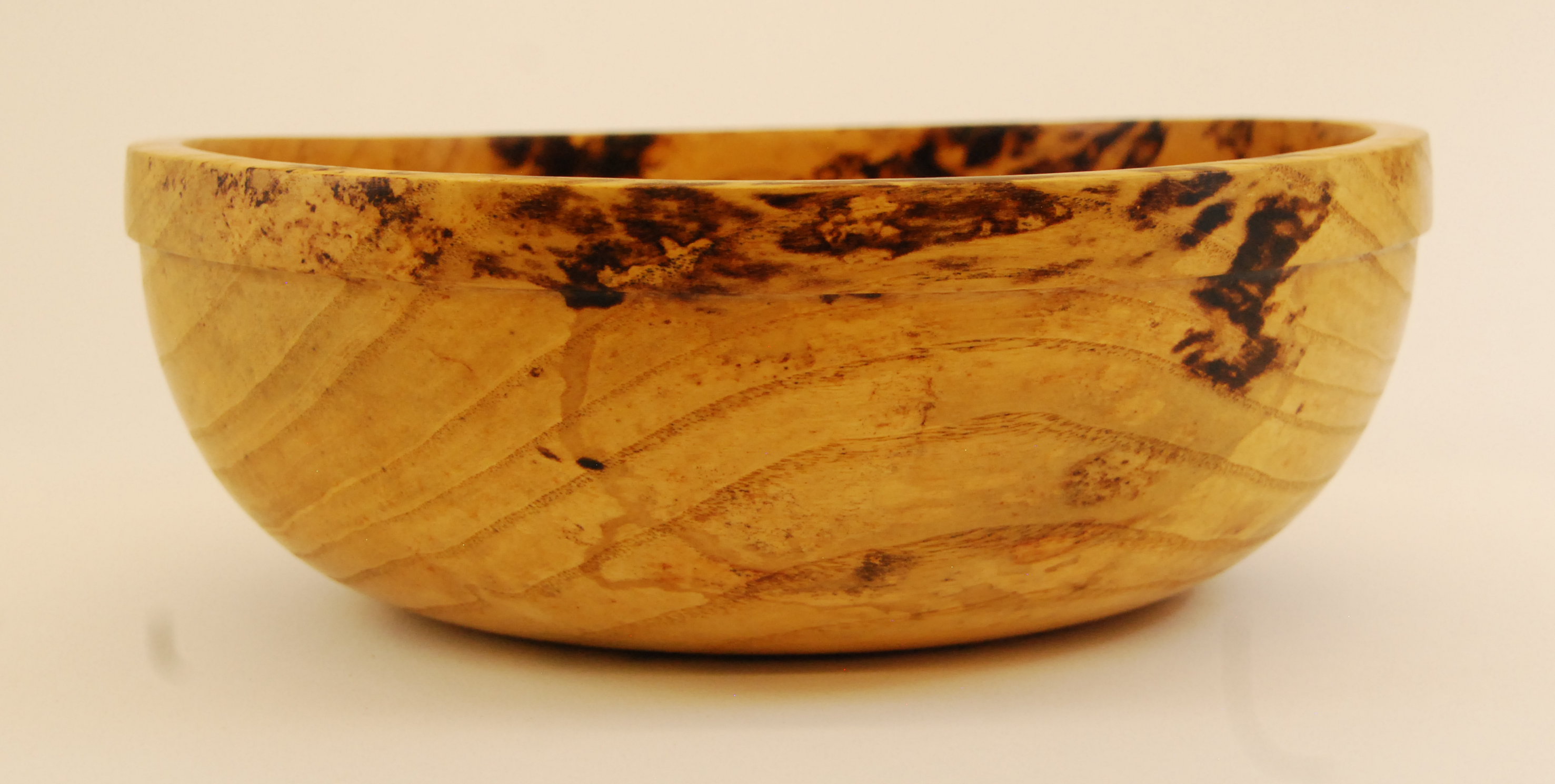
There is also some subtle light brown pigmentation on the outside of this ash bowl. A small band at the rim adds delicate visual interest.
Once turned bowls bend or warp as they dry, so the diameter often changes slightly, depending on where the bowl is measured.
On this ash bowl, the diameter varies between 6 1/2" and 6 3/4". The height is 2 3/8" to 2 1/2". This variation is charm of once- turned bowls, reminding one and all that wood is a natural product.
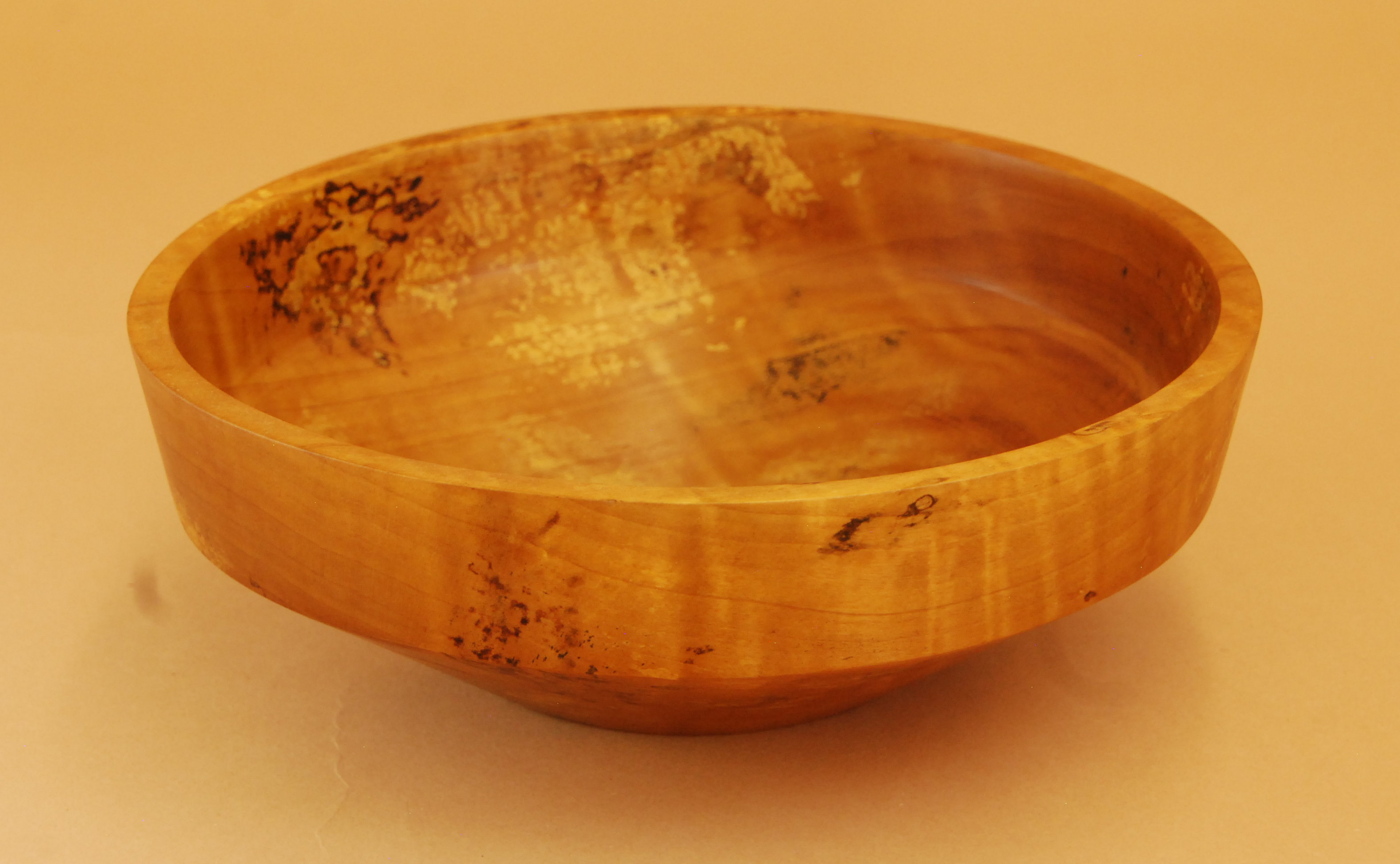
This Bradford pear bowl is packed with interesting details. First, there is near perfect balance and symmetry of growth ring pattern on the inside of the bowl.
Second, there is nice curl on opposite sides of the bowl, showing both on the inside and the outside.
\Third, there are bits of black fungal pigment randomly scattered out inside and outside, and a small area through the bowl, near the rim, clearly deliniated with a black zone line.
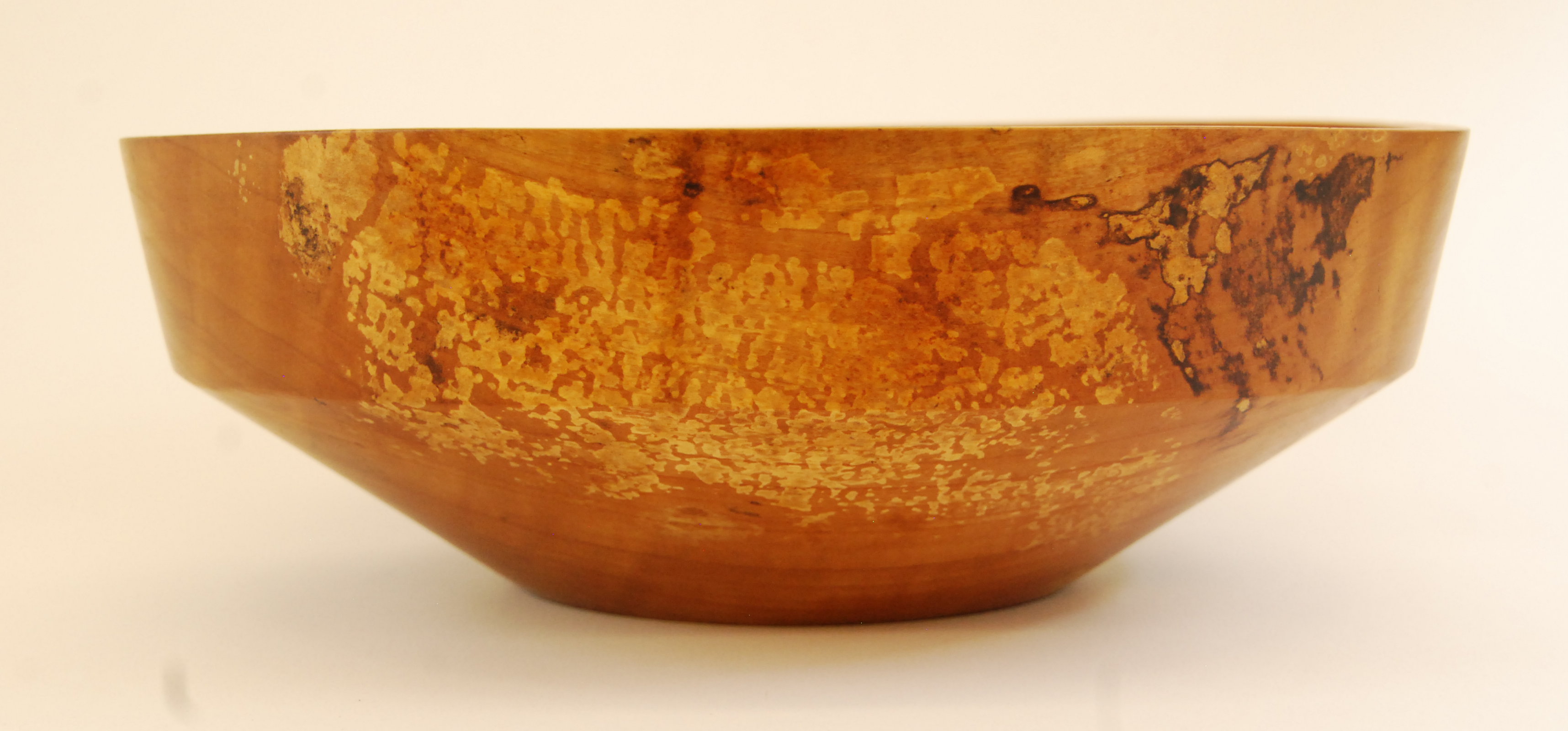
Finally, there are delightful areas of mottled bleaching inside and out.
Varying between 8 5/8" and 9" in diameter and 3 1/8" high, this bowl is a visual treasure for anyone who likes to look and observe, or is simply fascinated by wood and nature.
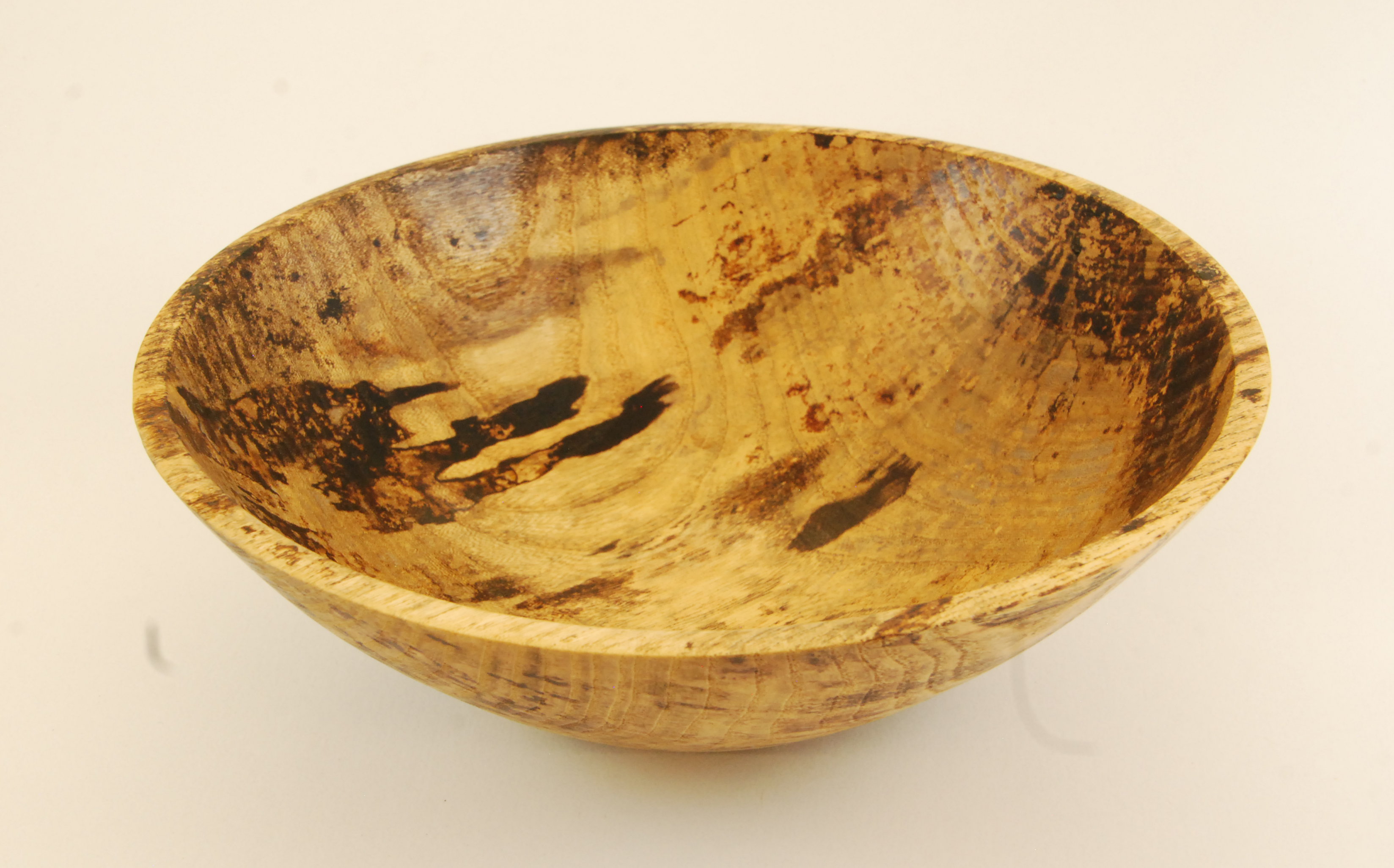
Hackberry is especially interesting because it shares a distinct feature with American and other elm trees. If one looks closely at the late season growth rings, it is possible to see the larger cells create washboard-like parallel wavy lines. This feature is enough by itself to make hackberry bowls always interesting to study close up.
If that wasn't enough, this bowl has a rich tapestry of brown and black pigments from the two fungi to which it was introduced. Looking closely, one can imagine the boundries where the fungi met and constructed their barriers.
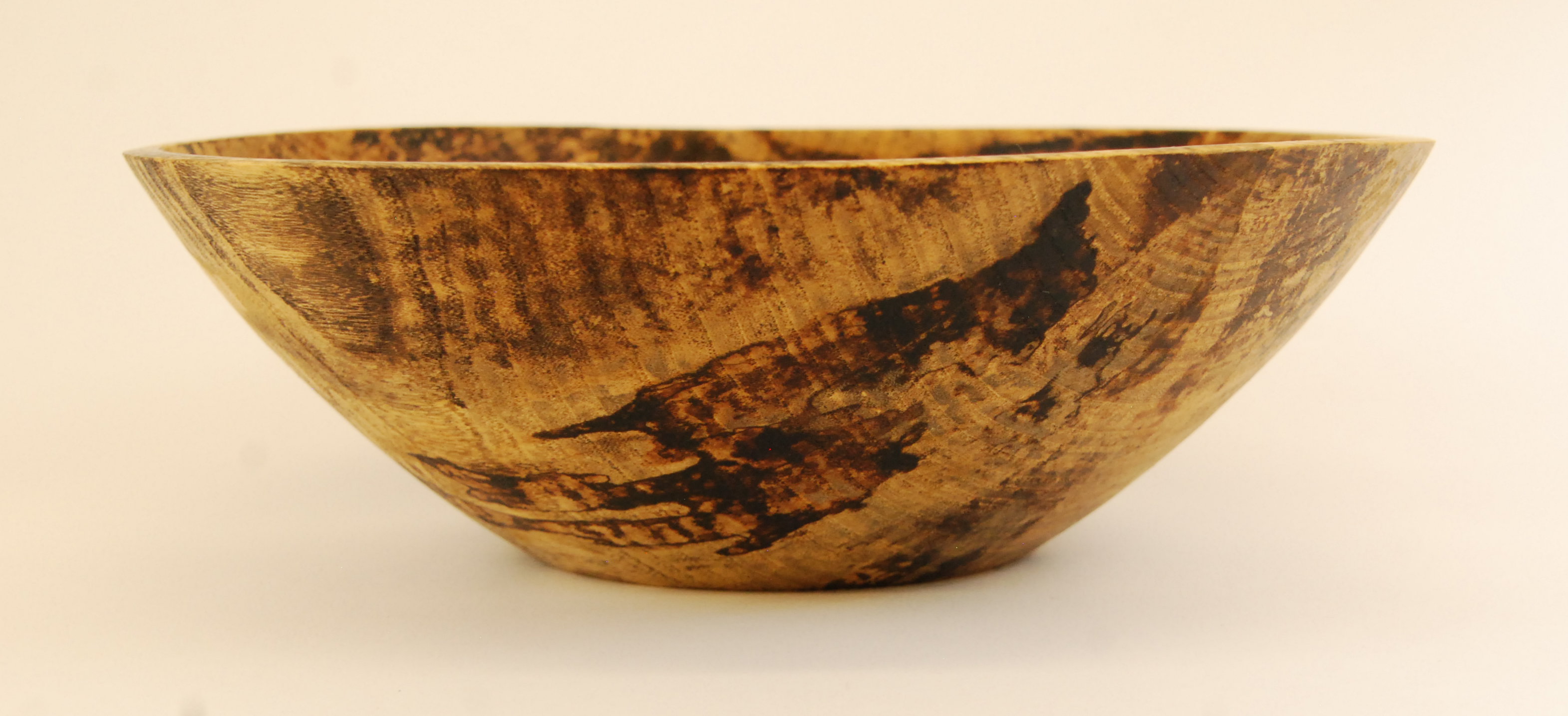
The outer surface shows more brown than black fungal pigment, but areas of conflict between the two fungi are again present.
The bowl wall profile shows a very graceful continuous curve on the outer surface, matched by the parallel inner surface and a uniformly thin wall thikness.
The bottom of the bowl even shows distinct zone lines with which most people are familiar.
This hackberry bowl is about 8 1/4" in diameter and 2 5/8" high.
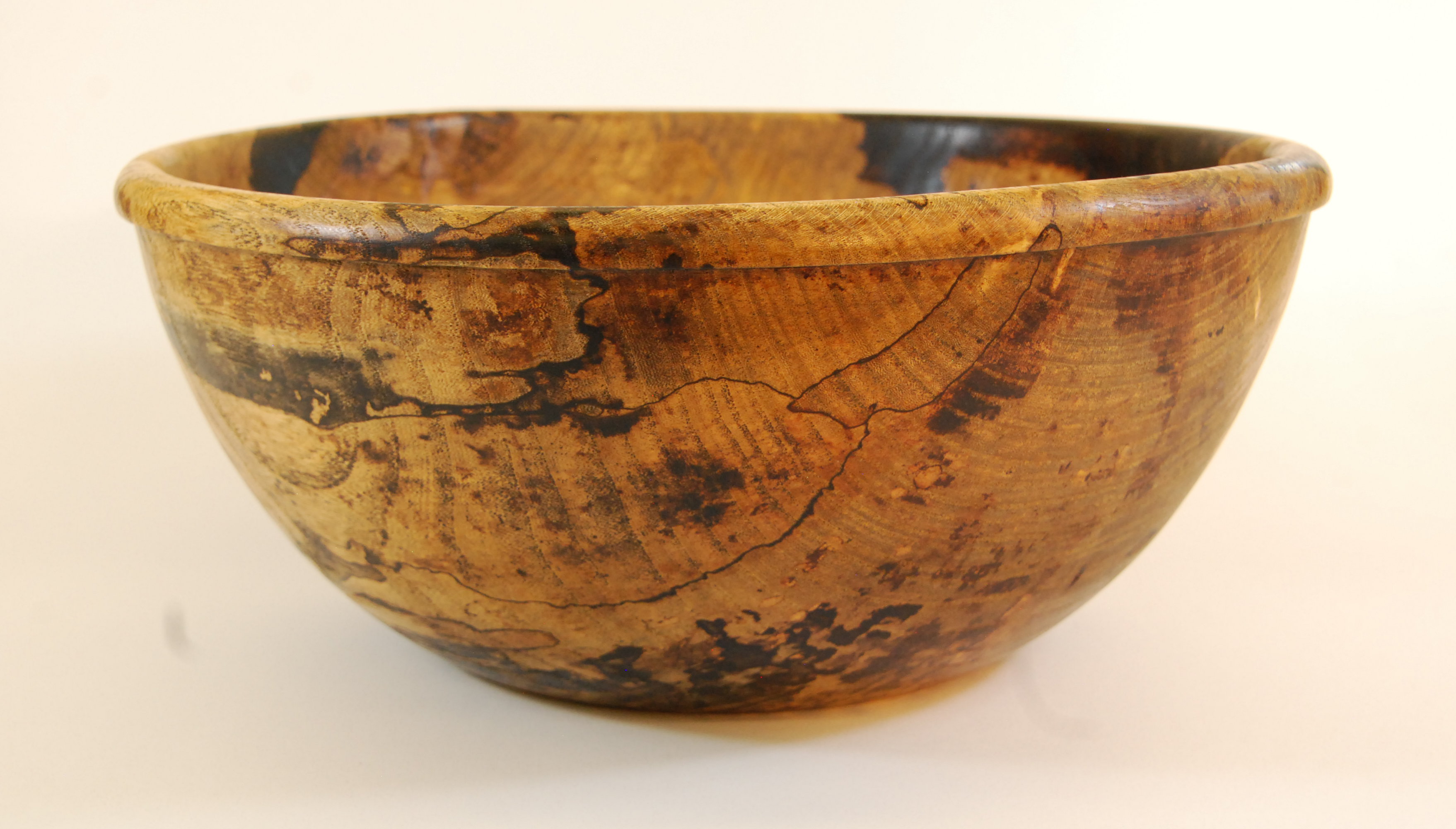
This large hackberry bowl, about 10" in diameter and 4 1/4" tall, is a delightful mix of brown and black pigments from the two fungi to which it was exposed.
There are black zone lines, brown zone lines, and small areas of black pigment mat where that fungus was trying to keep the wood from drying out.
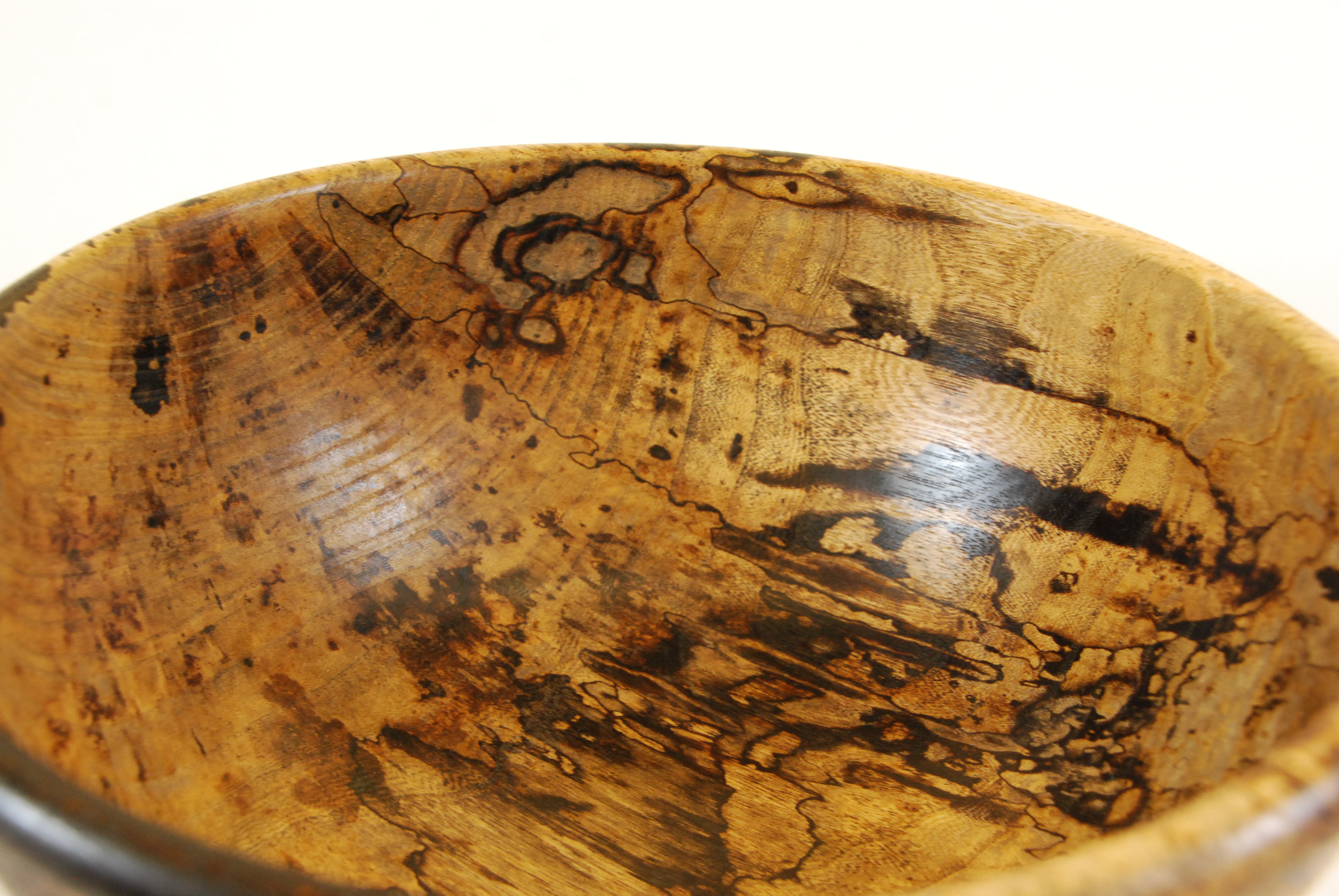
Rubbing over the surface, one can also feel small areas where a fungus had consumed all the residual sugar and began to decompose the wood itself.
Even the bottom deserves a look, for classic black zone lines.
Return to Bowls For Sale page